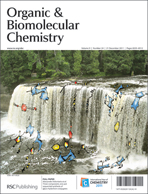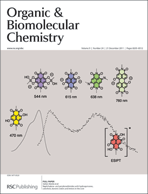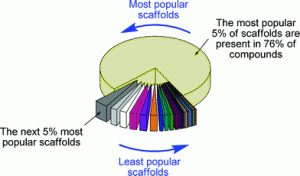Welcome to Issue 1 of OBC, 2012!
 On the front cover we have an article from Brian Stolz and team on the synthesis of enantioenriched γ-quaternary cycloheptenones, with potential for the preparation of non-natural analogs of cycloheptanoid natural products.
On the front cover we have an article from Brian Stolz and team on the synthesis of enantioenriched γ-quaternary cycloheptenones, with potential for the preparation of non-natural analogs of cycloheptanoid natural products.
Synthesis of enantioenriched γ-quaternary cycloheptenones using a combined allylic alkylation/Stork–Danheiser approach: preparation of mono-, bi-, and tricyclic systems
Nathan B. Bennett, Allen Y. Hong, Andrew M. Harned and Brian M. Stoltz
DOI: 10.1039/C1OB06189E
 On the inside front cover is an article from Robert Stockman and coworkers. They report the synthesis of an advanced intermediate, an azaspirocyclic aldehyde, in the route to halichlorine developed by Clive and coworkers, shortening the synthetic route by 15 steps.
On the inside front cover is an article from Robert Stockman and coworkers. They report the synthesis of an advanced intermediate, an azaspirocyclic aldehyde, in the route to halichlorine developed by Clive and coworkers, shortening the synthetic route by 15 steps.
Combining two-directional synthesis and tandem reactions: a short formal synthesis of halichlorine
Camille Gignoux, Annabella F. Newton, Alexandre Barthelme, William Lewis, Marie-Lyne Alcaraz and Robert A. Stockman
DOI: 10.1039/C1OB06380D
Incredibly 2012 will be our 10th year of publication and we would like to thank all our authors, referees, readers and Board members for their support over the last decade. Read the Editorial introduction to the next volume from Chair Jeffrey Bode and Editor Richard Kelly for the changes we’ve seen and what we have to look forward to in the coming year.












 Areas covered include:
Areas covered include:









